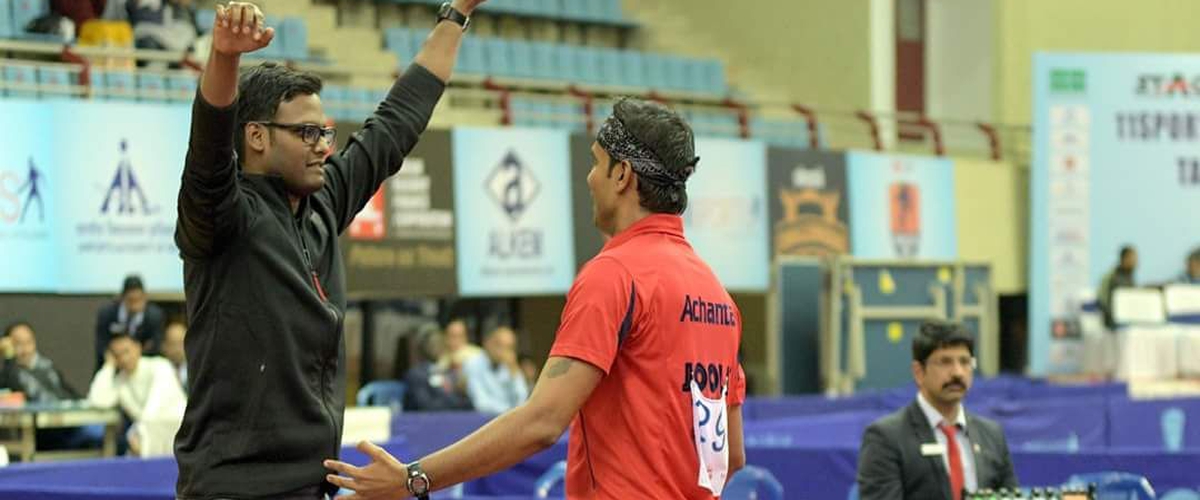"You had a bad day/ the camera don't lie," observed Daniel Powter's 2005 song, "Bad Day." While this ubiquitous pop ditty offered precious little in the way of concrete details, this line could easily preface an unflinchingly specific video analysis of your table tennis game. Over the last decade, an increasing number of professional players and their coaches have added video analysis to their toolkits. While professionals in all sports have long studied film to improve performance and scout opponents, a new generation of tech-savvy tutors is going beyond the power of the human eye and brain to extrapolate patterns from observational data. At the vanguard of video analysis in table tennis is Rajath Kamal Achanta (pictured, left). If something about that name seems familiar, it is likely because he shares the majority of it with his older brother, nine-time Indian national champion Sharath Kamal Achanta (pictured, right). While Rajath was a player of some note in his time, he has found more work lately in a supporting role. In 2009, he assumed the position of sports analyst for the Table Tennis Federation of India (TTFI). His video analysis helped the Indian national team achieve their best results to date at the 2018 Commonwealth Games and Asian Games. "Video analysis in Indian table tennis was a novel idea back then," says Rajath. "The younger crop was coming up at the national level and I am happy I could play a part in their progress." This younger crop includes Sathiyan Gnanasekaran, who in July 2019 became India's highest ranked player ever at world #24. "During the 2010 Commonwealth Games, government funding for table tennis was huge," recalls Rajath. "The federation could hire an analyst. Now, funding for table tennis does not include video analysis. I do it on an individual basis." Despite the loss of government contracts, Rajath has stayed plenty busy. Among his many side hustles, he has found his services in demand in India's Ultimate Table Tennis league. He provides detailed video analysis for the Chennai Lions, which happens to be his brother Sharath's team. "We helped Sharath improve his backhand," says his proud brother Rajath. "After using video analysis, he was able to shorten his stroke, use more of his hip, elbow and wrist as opposed to more shoulders. This led to an improvement in his game and rankings." Rajath, in league with companies like Stupa Sports Analytics and Omron which use artificial intelligence (AI) to pinpoint players' patterns, points to the rapid gains they have made in video analysis. "It has evolved a lot in the last couple of years," he says. "Earlier, it was done manually. A table tennis analysis company has been helping me analyse the game which has changed dramatically. We are coming up with AI-based ball tracking system to help the players." Now, with all competition suspended due to the COVID-19 pandemic, video analysis is one of the few viable options remaining for players aiming to stay in peak form for the Olympics and other international competitions. Manika Batra, India's top-ranked woman, describes it as an integral part of her "new normal." "Keeping fit physically with all that is available and eating healthy so as to not put on weight and doing meditation and video analysis is what I’m putting my stress into rather than being depressed," says Batra of life during quarantine. Rajath Kamal Achanta can help you diagnose the bad habits that can cause a bad day on the table. The camera don't lie.
More at The New Indian Express
